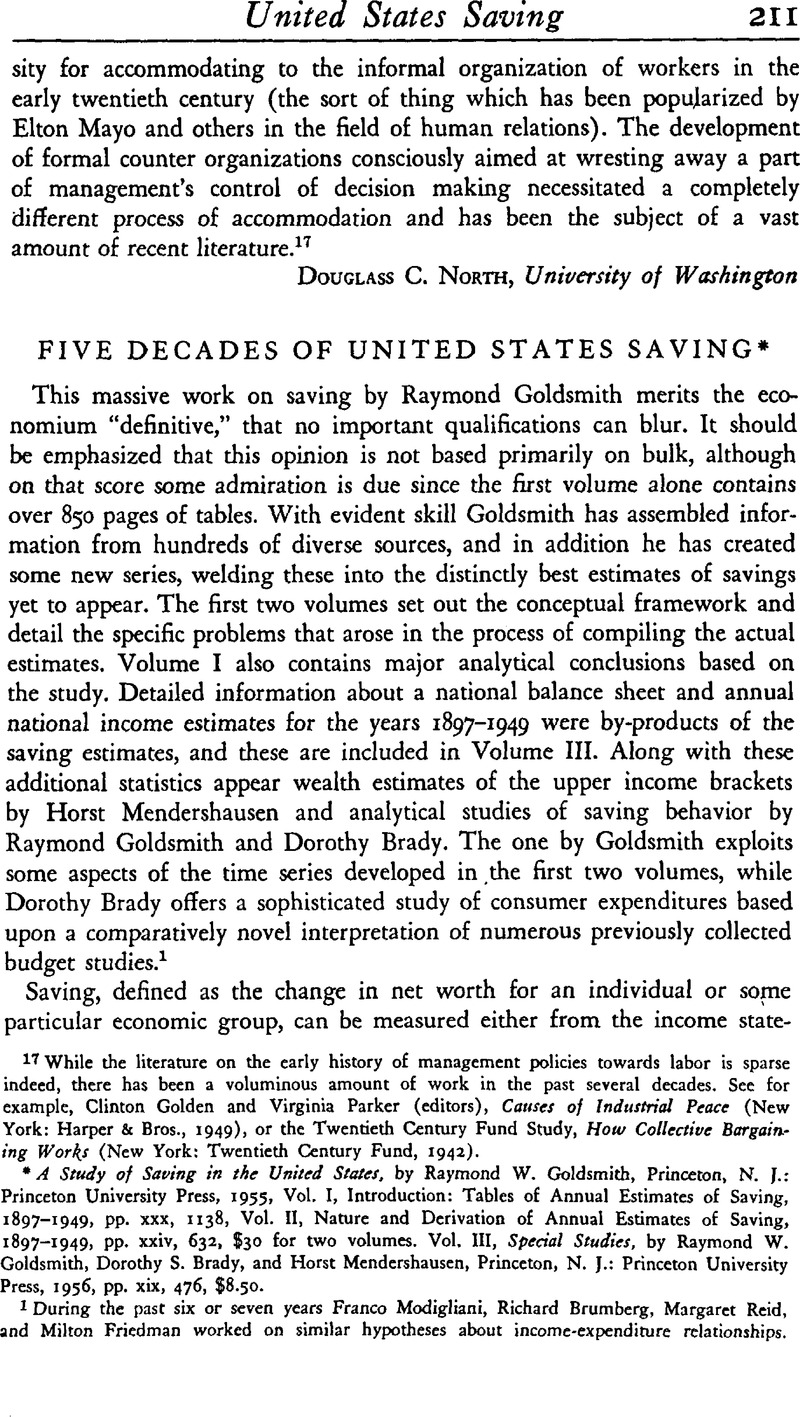No CrossRef data available.
Published online by Cambridge University Press: 03 February 2011

1 During the past six or seven years Franco Modigliani, Richard Brumberg, Margaret Reid, and Milton Friedman worked on similar hypotheses about income-expenditure relationships.
2 These conclusions were obtained through least-squares curve fitting.
3 The reviewer believes that Goldsmith places unwarranted faith in the reduction of errors because the total estimate of saving has been derived from “a combination of essentially independent component” (Vol. II, p. 140). The fact that the series were estimated independently does not imply that the errors are random and independent in the strict statistical sense. Fallacious estimating techniques could well have been learned in common by the independent compilers of the series.
4 Many more ramifications of the net-gross investment relationship are probed by Simon Kuznets, particularly the effects of growth and durability of capital. “International Differences in Capital Formation and Financing,” in Capital Formation and Economic Growth, A Conference of the Universities-National Bureau Committee for Economic Research (Princeton, N. J.: Princeton University Press, 1955), pp. 19–106Google Scholar, especially Appendix B, pp. 76–81.
5 Duesenberry, James S., Income, Saving and the Theory of Consumer Behavior (Cambridge: Harvard University Press, 1949)Google Scholar, and Modigliani, Franco, “Fluctuations in the Saving-Income Ratio,” Studies in Income and Wealth, Volume II (New York: National Bureau of Economic Research, Inc., 1949)Google Scholar.
6 Support for this proposition can be found in Table 17 of Simon Kuznets’ Shares of Upper Income Groups in Income and Saving, National Bureau of Economic Research, Occasional Paper 35 (New York: National Bureau of Economic Research, Inc., 1950)Google Scholar. This table shows that the ratio of saving to income before taxes changed little for the top one through the top five per cent of the income distribution in the years 1920 to 1940.